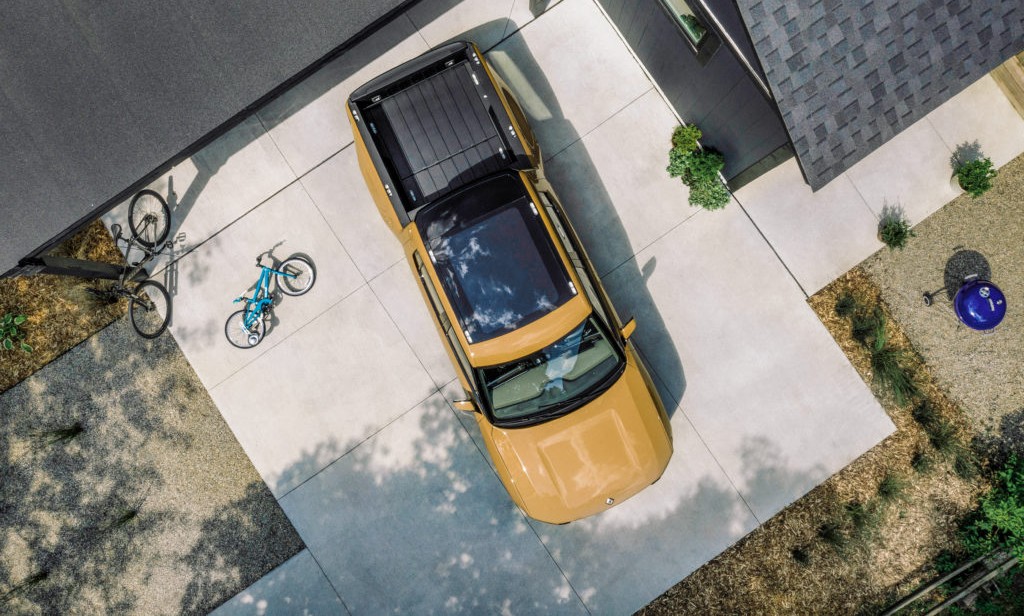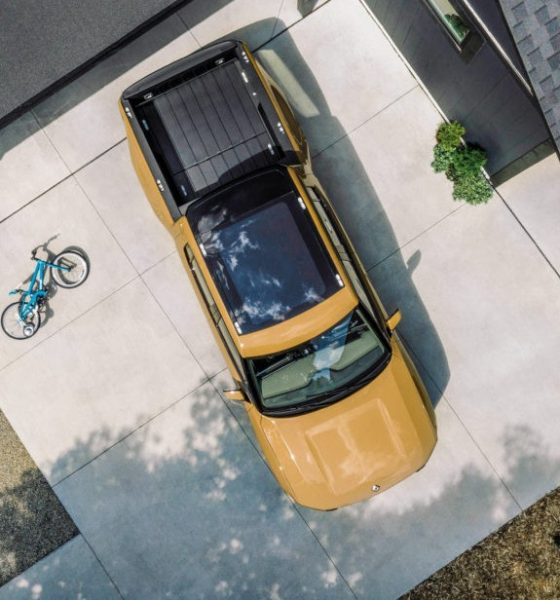

Investor's Corner
Rivian gets $2.5 billion in funds in first investment round of 2020
Electric car maker Rivian has closed a $2.5 billion investment round led by fund manager T. Rowe Price.
The company’s most recent investments came from numerous participants, including Soros Fund Management LLC, Coatue, Fidelity Management and Research Company, and Baron Capital Group, who holds over $1.5 billion in TSLA stock.
Joe Fath, portfolio manager of T. Rowe Price Growth Stock Fund, said, “We are excited to continue this journey with Rivian’s innovative and talented team as they now prepare to deliver their groundbreaking products that help shift to a carbon-neutral planet.”
Rivian is currently developing its R1T pickup truck for the first production run, which is set to begin in early 2021 at its production facility in Normal, Illinois. The electric automaker is also in the process of developing its other launch product, the R1S Sport Utility Vehicle, for a production run next year.
Rivian Founder and CEO RJ Scaringe has been working with the company’s team of engineers to create a series of electric vehicles that are capable of handling rough, rocky, and unusual outdoor terrain while remaining sustainable and giving drivers high performance. However, Scaringe, while doing plenty of work behind the scenes, is appreciative of the investors who believe in Rivian’s mission to deliver sustainable and fun vehicles to the world’s adventurous people.
“We are grateful for the strong investor support that helps enable us to focus on execution of our products,” Scaringe said in a statement.
In 2019, Rivian closed several big investment deals with some of the largest companies in the world. In February, Amazon invested a $700 million investment into the electric automaker. The e-commerce giant also requested Rivian’s services to develop an electric delivery van that would reduce the carbon footprint left by combustion engine delivery vehicles. Rivian will provide Amazon with 100,000 of these sustainable delivery vans starting in 2021.
In December, Rivian closed another investment round with a total of $1.3 billion in secured funds. Ford participated in this round, adding to a $500 million investment that it gave Rivian in April.
Rivian’s R1T recently underwent intense off-road and speed performance testing at an Arizona proving grounds in late June. The tests allowed Rivian to assess the R1T’s durability when scaling unfavorable conditions for any vehicle. The truck handled the scenarios with relative ease while utilizing its versatile air suspension system, climbing up high-grade hills covered in large rocks.
The R1T will come in three different variants, all sporting different battery packs. Available in 105, 135, and 180 kWh, the R1T’s three configurations will offer all drivers precisely what they desire in terms of speed, performance, and towing capabilities. The truck starts at $69,000 for its 105 kWh variant and is set to begin production in 2021. Rivian will also start production of R1S and the Amazon delivery vans next year.
“We are focused on the launch of our R1T, R1S, and Amazon delivery vehicles. With all three launches occurring in 2021, our teams are working hard to ensure our vehicles, supply chain, and production systems are ready for a robust production ramp up,” Scaringe said.

Investor's Corner
Tesla stock closes at all-time high on heels of Robotaxi progress

Tesla stock (NASDAQ: TSLA) closed at an all-time high on Tuesday, jumping over 3 percent during the day and finishing at $489.88.
The price beats the previous record close, which was $479.86.
Shares have had a crazy year, dipping more than 40 percent from the start of the year. The stock then started to recover once again around late April, when its price started to climb back up from the low $200 level.
This week, Tesla started to climb toward its highest levels ever, as it was revealed on Sunday that the company was testing driverless Robotaxis in Austin. The spike in value pushed the company’s valuation to $1.63 trillion.
Tesla Robotaxi goes driverless as Musk confirms Safety Monitor removal testing
It is the seventh-most valuable company on the market currently, trailing Nvidia, Apple, Alphabet (Google), Microsoft, Amazon, and Meta.
Shares closed up $14.57 today, up over 3 percent.
The stock has gone through a lot this year, as previously mentioned. Shares tumbled in Q1 due to CEO Elon Musk’s involvement with the Department of Government Efficiency (DOGE), which pulled his attention away from his companies and left a major overhang on their valuations.
However, things started to rebound halfway through the year, and as the government started to phase out the $7,500 tax credit, demand spiked as consumers tried to take advantage of it.
Q3 deliveries were the highest in company history, and Tesla responded to the loss of the tax credit with the launch of the Model 3 and Model Y Standard.
Additionally, analysts have announced high expectations this week for the company on Wall Street as Robotaxi continues to be the focus. With autonomy within Tesla’s sights, things are moving in the direction of Robotaxi being a major catalyst for growth on the Street in the coming year.
Elon Musk
Tesla needs to come through on this one Robotaxi metric, analyst says
“We think the key focus from here will be how fast Tesla can scale driverless operations (including if Tesla’s approach to software/hardware allows it to scale significantly faster than competitors, as the company has argued), and on profitability.”

Tesla needs to come through on this one Robotaxi metric, Mark Delaney of Goldman Sachs says.
Tesla is in the process of rolling out its Robotaxi platform to areas outside of Austin and the California Bay Area. It has plans to launch in five additional cities, including Houston, Dallas, Miami, Las Vegas, and Phoenix.
However, the company’s expansion is not what the focus needs to be, according to Delaney. It’s the speed of deployment.
The analyst said:
“We think the key focus from here will be how fast Tesla can scale driverless operations (including if Tesla’s approach to software/hardware allows it to scale significantly faster than competitors, as the company has argued), and on profitability.”
Profitability will come as the Robotaxi fleet expands. Making that money will be dependent on when Tesla can initiate rides in more areas, giving more customers access to the program.
There are some additional things that the company needs to make happen ahead of the major Robotaxi expansion, one of those things is launching driverless rides in Austin, the first city in which it launched the program.
This week, Tesla started testing driverless Robotaxi rides in Austin, as two different Model Y units were spotted with no occupants, a huge step in the company’s plans for the ride-sharing platform.
Tesla Robotaxi goes driverless as Musk confirms Safety Monitor removal testing
CEO Elon Musk has been hoping to remove Safety Monitors from Robotaxis in Austin for several months, first mentioning the plan to have them out by the end of 2025 in September. He confirmed on Sunday that Tesla had officially removed vehicle occupants and started testing truly unsupervised rides.
Although Safety Monitors in Austin have been sitting in the passenger’s seat, they have still had the ability to override things in case of an emergency. After all, the ultimate goal was safety and avoiding any accidents or injuries.
Goldman Sachs reiterated its ‘Neutral’ rating and its $400 price target. Delaney said, “Tesla is making progress with its autonomous technology,” and recent developments make it evident that this is true.
Investor's Corner
Tesla gets bold Robotaxi prediction from Wall Street firm
Last week, Andrew Percoco took over Tesla analysis for Morgan Stanley from Adam Jonas, who covered the stock for years. Percoco seems to be less optimistic and bullish on Tesla shares, while still being fair and balanced in his analysis.

Tesla (NASDAQ: TSLA) received a bold Robotaxi prediction from Morgan Stanley, which anticipates a dramatic increase in the size of the company’s autonomous ride-hailing suite in the coming years.
Last week, Andrew Percoco took over Tesla analysis for Morgan Stanley from Adam Jonas, who covered the stock for years. Percoco seems to be less optimistic and bullish on Tesla shares, while still being fair and balanced in his analysis.
Percoco dug into the Robotaxi fleet and its expansion in the coming years in his latest note, released on Tuesday. The firm expects Tesla to increase the Robotaxi fleet size to 1,000 vehicles in 2026. However, that’s small-scale compared to what they expect from Tesla in a decade.
Tesla expands Robotaxi app access once again, this time on a global scale
By 2035, Morgan Stanley believes there will be one million Robotaxis on the road across multiple cities, a major jump and a considerable fleet size. We assume this means the fleet of vehicles Tesla will operate internally, and not including passenger-owned vehicles that could be added through software updates.
He also listed three specific catalysts that investors should pay attention to, as these will represent the company being on track to achieve its Robotaxi dreams:
- Opening Robotaxi to the public without a Safety Monitor. Timing is unclear, but it appears that Tesla is getting closer by the day.
- Improvement in safety metrics without the Safety Monitor. Tesla’s ability to improve its safety metrics as it scales miles driven without the Safety Monitor is imperative as it looks to scale in new states and cities in 2026.
- Cybercab start of production, targeted for April 2026. Tesla’s Cybercab is a purpose-built vehicle (no steering wheel or pedals, only two seats) that is expected to be produced through its state-of-the-art unboxed manufacturing process, offering further cost reductions and thus accelerating adoption over time.
Robotaxi stands to be one of Tesla’s most significant revenue contributors, especially as the company plans to continue expanding its ride-hailing service across the world in the coming years.
Its current deployment strategy is controlled and conservative to avoid any drastic and potentially program-ruining incidents.
So far, the program, which is active in Austin and the California Bay Area, has been widely successful.








